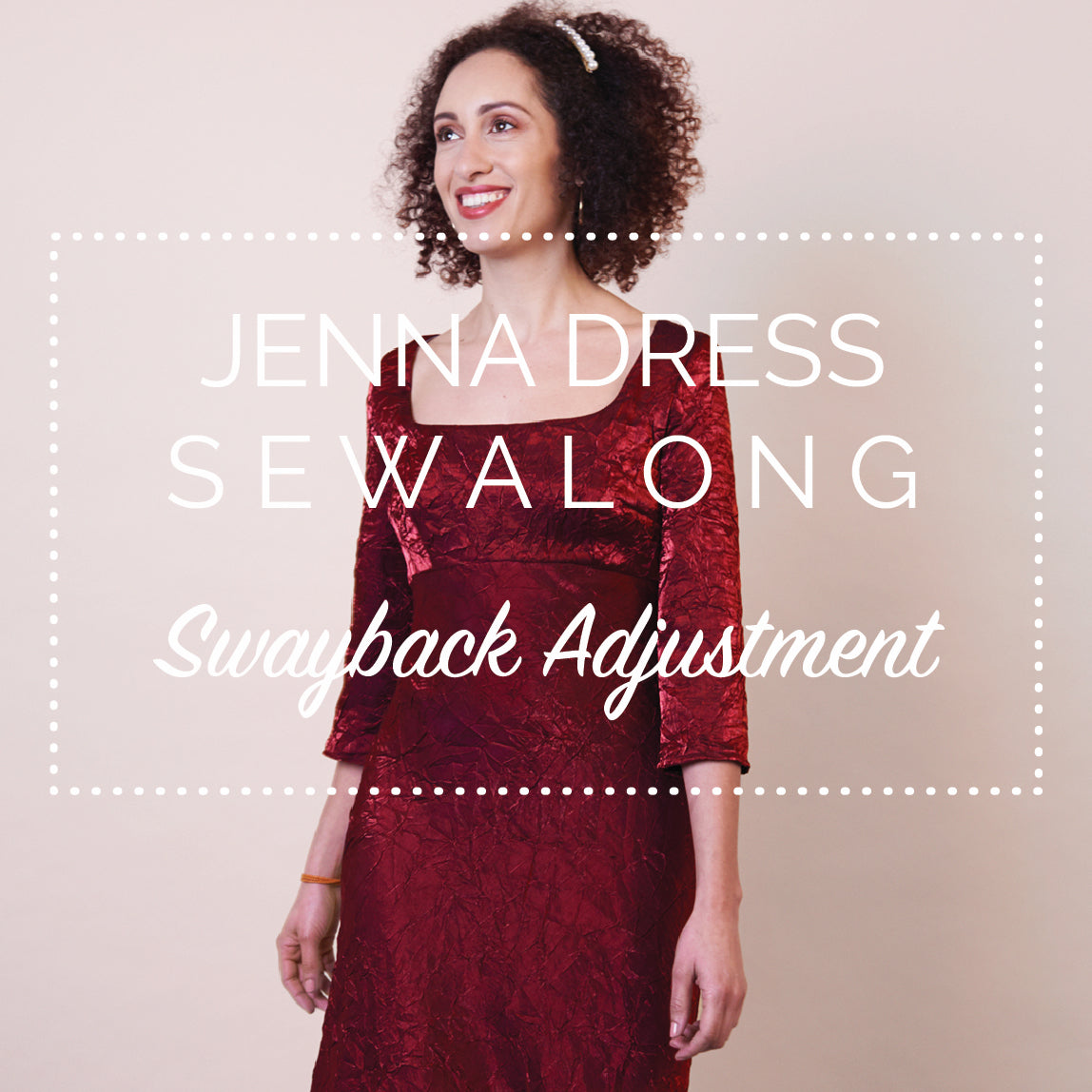
This week we're all about nailing the fit of our Jenna dresses! Just as shop bought clothes have been drafted and produced to a "standard" chart of proportions, so too are sewing patterns. Very few people will fit a pattern perfectly right out of the box, so we find it helpful to think of sewing patterns as a foundation for limitless possibilities - not only in terms of the design, but crucially in terms of the fit.
*To be taken to all the posts in the Jenna Dress sewalong, please click here*
Swayback Adjustment
Today, we'll be talking about how to alter a paper pattern for swaybacks. Sounds a little scary but I promise it's actually a very simple and straightforward alteration to make, and one that will make the world of difference to the fit of your handmade garms.
So what exactly is a Swayback? And how do I know if I have one??
A swayback is basically an exaggerated concave curve at the small of your back. It can be due to your posture, for example if you're a dancer or gymnast, or it could just be the natural shape of your spine.
If you have a swayback, you'll notice that garments often seem too long at the centre back, creating horizontal wrinkles where the excess fabric pools at the small of your back.
As with most fitting alterations, but this one more than most, it's important not to mis-diagnose! Other fitting issues that could easily be misconstrued as a swayback include:
- Full bust - if you have a full bust, this will elevate the waistline at the front, probably causing it to droop down at the back and create those horizontal wrinkles. Try a full bust adjustment.
- Full butt - if you have a full or prominent bottom, and the skirt is therefore a little too snug around your seat (hip) measurement, the fabric will ride up and pool in the small of your back. Try a full butt adjustment.
The good news is that altering your pattern for a swayback is really quick and easy! All we need to do is pinch out those unwanted folds and thereby shorten the centre back, without changing the side seams or front.
Step 1
Put on your toile and carefully pinch out the horizontal folds that occur across the small of your back on the skirt back. If you have a friend to help you out here, all the better. Pin the excess fabric in order to measure the amount by which you'll need to shorten the centre back.
Step 2
Now you can take off your toile and measure that unwanted excess.
For example, we pinched out about 1" of excess fabric at the centre back, sloping out to nothing at the side seams. As a result, we'll be taking out 1" from the centre back length at the bodice back.
Step 3
Take your skirt back piece and mark out the seam allowance line at the side seam (shown in blue).
Step 4
Draw a straight line from the centre back across to the side seam at the same point where you've pinned out the excess on your toile (shown in pink). This will be about 1-2" down from the waistline, before the skirt curves out for the hips. When you get to the seam allowance of the side seam, stop your line there, draw a little circle to indicate a pivot point, and then continue the line out to the raw edge.
Cut this line from the centre back to the circle and then snip in from the side seam to allow that point to pivot or hinge.
Step 5
You'll see that you can now overlap the line you just cut, thereby reducing the length of the centre back without affecting the side seam.
Reduce the centre back seam by 1", or however much as dictated by what you pinched out on your toile, and tape it down.
True out the centre back seam ("true out" just means redraw the line so it's smooth again) - you may need to slip a small piece of scrap paper underneath.
Cut it out and you're done!
And there you have it! With all alterations, we highly recommend that you make another toile to check that you're happy with the alterations that you made before cutting into your delicious fashion fabric!








Comments on this post (0)